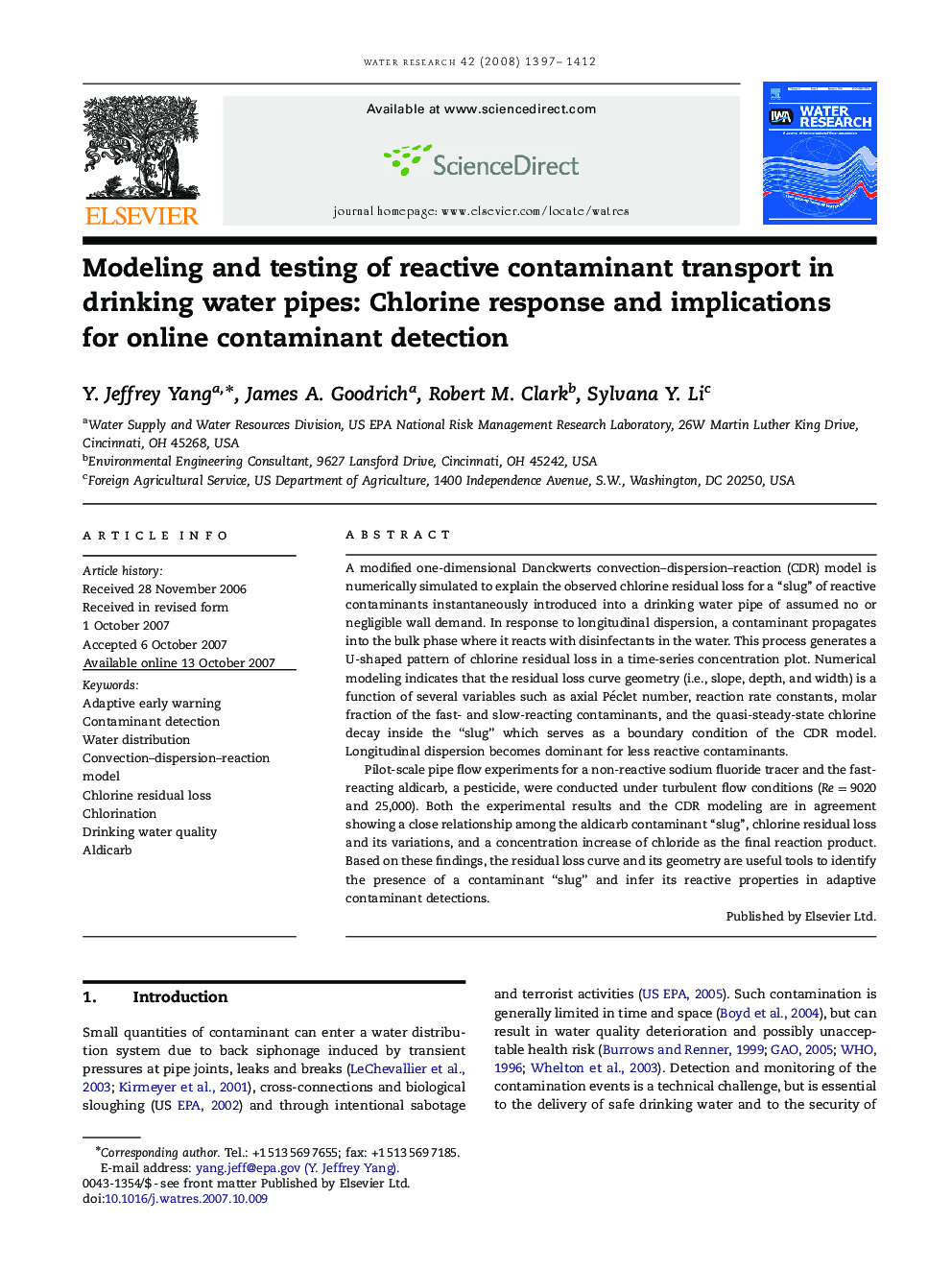| کد مقاله | کد نشریه | سال انتشار | مقاله انگلیسی | نسخه تمام متن |
|---|---|---|---|---|
| 4485027 | 1623123 | 2008 | 16 صفحه PDF | دانلود رایگان |

A modified one-dimensional Danckwerts convection–dispersion–reaction (CDR) model is numerically simulated to explain the observed chlorine residual loss for a “slug” of reactive contaminants instantaneously introduced into a drinking water pipe of assumed no or negligible wall demand. In response to longitudinal dispersion, a contaminant propagates into the bulk phase where it reacts with disinfectants in the water. This process generates a U-shaped pattern of chlorine residual loss in a time-series concentration plot. Numerical modeling indicates that the residual loss curve geometry (i.e., slope, depth, and width) is a function of several variables such as axial Péclet number, reaction rate constants, molar fraction of the fast- and slow-reacting contaminants, and the quasi-steady-state chlorine decay inside the “slug” which serves as a boundary condition of the CDR model. Longitudinal dispersion becomes dominant for less reactive contaminants.Pilot-scale pipe flow experiments for a non-reactive sodium fluoride tracer and the fast-reacting aldicarb, a pesticide, were conducted under turbulent flow conditions (Re=9020 and 25,000). Both the experimental results and the CDR modeling are in agreement showing a close relationship among the aldicarb contaminant “slug”, chlorine residual loss and its variations, and a concentration increase of chloride as the final reaction product. Based on these findings, the residual loss curve and its geometry are useful tools to identify the presence of a contaminant “slug” and infer its reactive properties in adaptive contaminant detections.
Journal: Water Research - Volume 42, Issues 6–7, March 2008, Pages 1397–1412